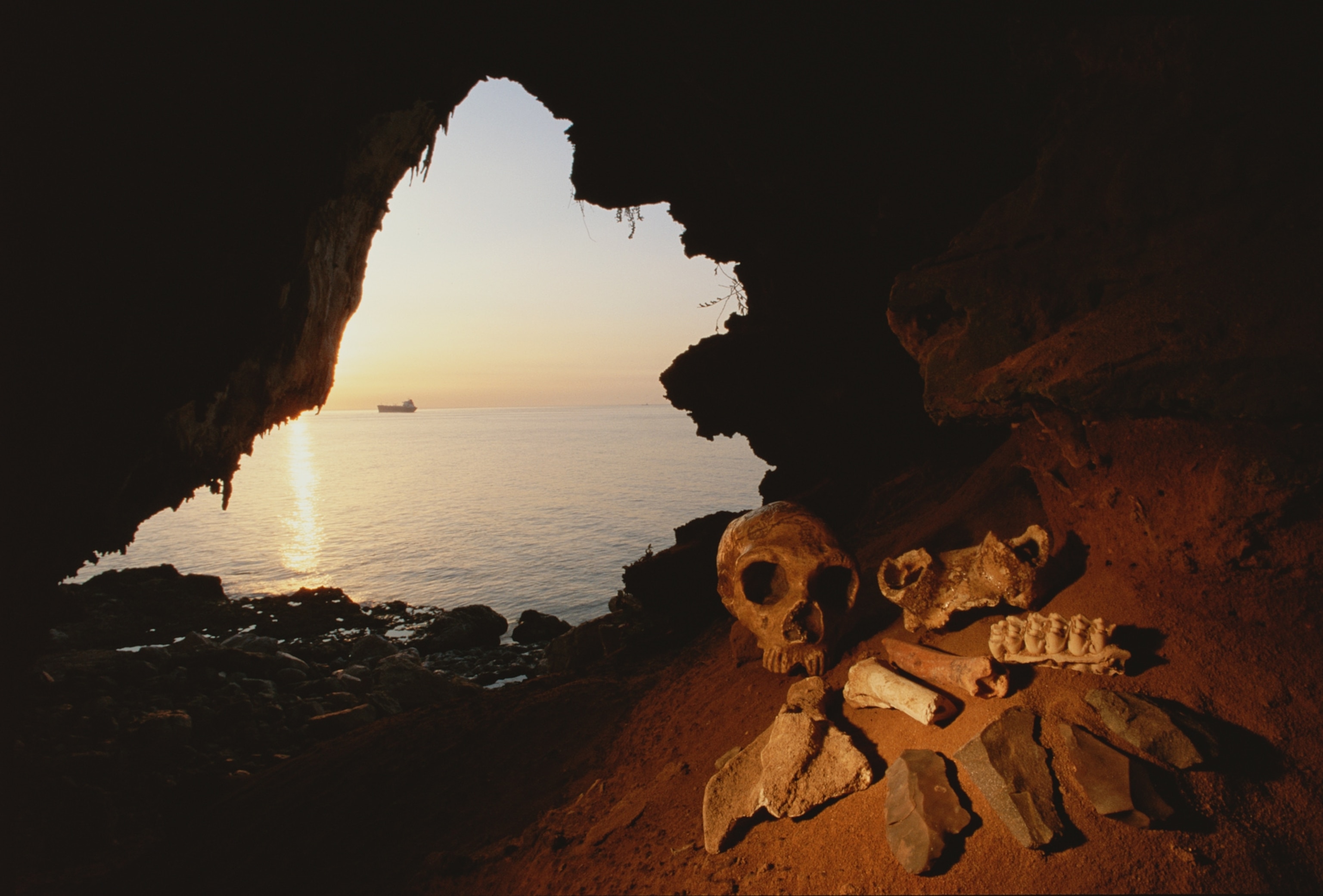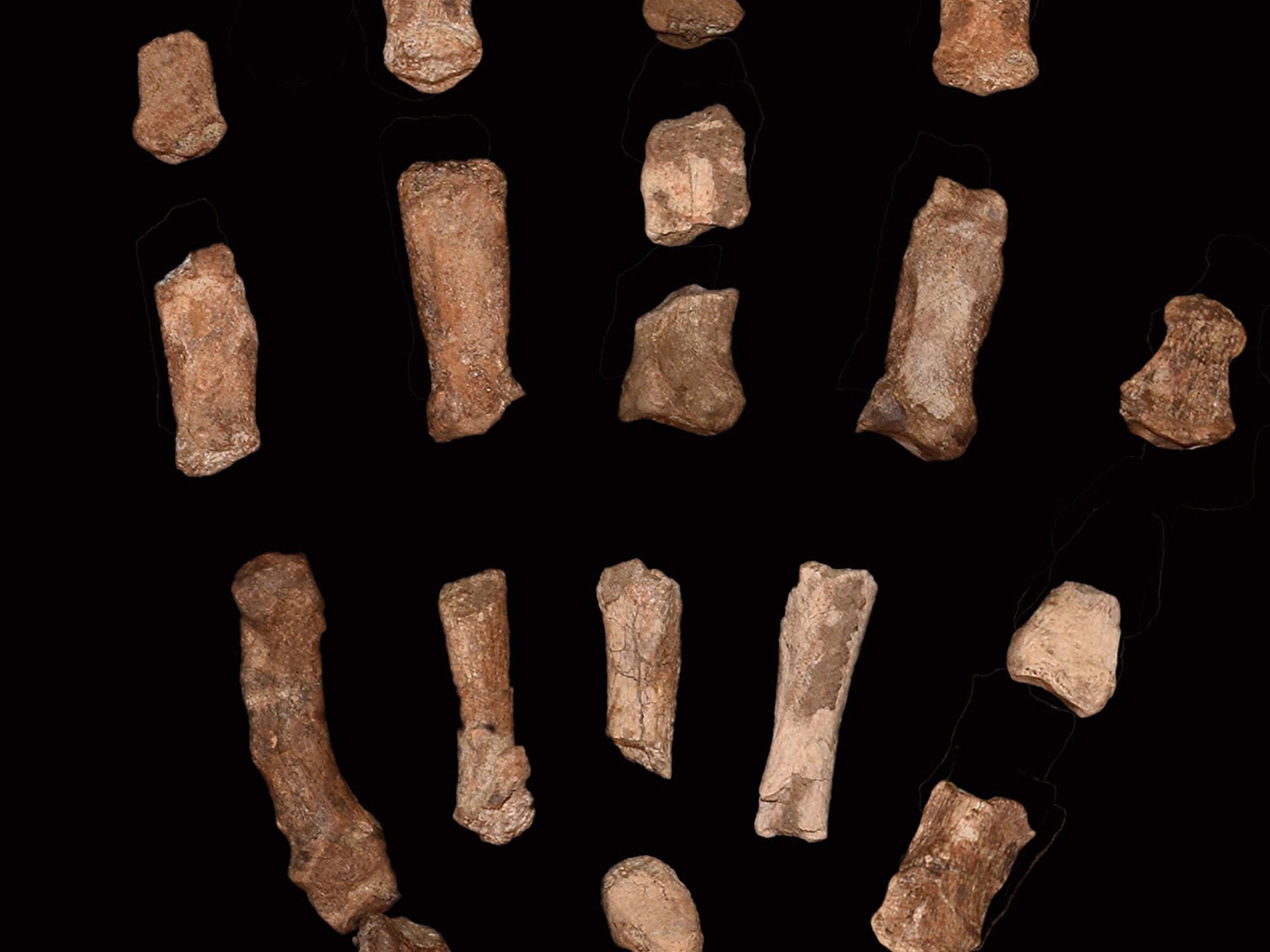
Hot Stew in the Ice Age? Evidence Shows Neanderthals Boiled Food
An ancient diet expert suggests our early cousins knew how to boil their meals.
Neanderthal cooking likely wouldn't have won any prizes on Top Chef, but a paleontologist suggests that our ancient cousins knew how to cook a mean stew, without even a stone pot to their name.
"I think it's pretty likely the Neanderthals boiled," said University of Michigan archaeologist John Speth at a recent meeting of the Society for American Archaeology in Austin, Texas. "They were around for a long time, and they were very clever with fire."
Neanderthals were a species of early humans who lived in Europe and the Near East until about 30,000 years ago. Conventional wisdom holds that boiling to soften food or render fat from bones may have been one of the advantages that allowed Homo sapiens to thrive, while Neanderthals died out. (Related: "Surprise! 20 Percent of Neanderthal Genome Lives on in Modern Humans, Scientists Find.")
But based on evidence from ancient bones, spears, and porridge, Speth believes our Stone Age cousins likely boiled their food. He suggests that Neanderthals boiled using only a skin bag or a birch bark tray by relying on a trick of chemistry: Water will boil at a temperature below the ignition point of almost any container, even flammable bark or hides.
"You can boil in just about anything as long as you take it off the flame pretty quickly," Speth says. His presentation included video of water boiling in a paper cup (the water keeps the paper from reaching its ignition temperature) and mention of scenes in Jean Auel's 1980 novel, Clan of the Cave Bear (later a movie), in which Neanderthals boiled stews in hide pouches.
"This wasn't an invention of some brainy modern people," Speth says. (Related: "Neanderthals Lived in Small, Isolated Populations, Gene Analysis Shows.")
Quest for Fire
While conceding that Neanderthals were handy with wood and fire, archaeologists such as Mary Stiner of the University of Arizona in Tucson want to let Speth's idea simmer for a while before they swallow it.
"Whether they went as far as boiling stuff in birch bark containers or in hides is harder to evaluate," Stiner says. "I am not convinced."
The use of fire by humans goes back more than 300,000 years in Europe, where evidence is seen in Neanderthal hearths. (Related: "Oldest Known Hearth Found in Israel Cave.")
But most research has supported the idea that Stone Age boiling, which relied on heating stones in fire pits and dropping them into water, arrived on the scene too late for Neanderthals.
Evidence of cracked "boiling stones" in caves used by early modern humans, for example, goes back only about 26,000 years, too recent for Neanderthals. And pottery for more conventional boiling appears to be only about 20,000 years old.
Birch Bubbling
But who needs boiling stones or pots? Speth suggests that Neanderthals boiled foods in birch bark twisted into trays, a technology that prehistoric people used to boil maple syrup from tree sap.
Archaeologists have demonstrated that Neanderthals relied on birch tar as an adhesive for hafting spear points as long as 200,000 years ago. Making birch tar requires clever cooking in an oxygen-free container, says paleontologist Michael Bisson of Canada's McGill University.
"I've burned myself trying to do it," Bisson says, adding that Neanderthals were plenty clever when it came to manipulating birch. They likely ignited rolled-up birch bark "cigars" and plunged them into holes to cook the tar in an oxygen-free environment.
If the tar is exposed to oxygen in the air as it cooks, "it explodes," Bisson adds.
Supporting the boiling idea, Speth said that animal bones found in Neanderthal settings are 98 percent free of scavenger's gnawing marks, which he says suggests the fat had been cooked off.
And some grains found in the teeth of a Neanderthal buried in Iraq's Shanidar Cave site appear to have been cooked, according to a 2011 Proceedings of the National Academies of Science report.
"It is speculative, but I think it is pretty likely that they knew how to boil," Speth says.
In a separate talk at the meeting, University of Michigan paleontologist Andrew White noted recent evidence that Neanderthal mothers weaned their children at an earlier age than human mothers typically do. He said the early transition from milk to food supports the theory that Neanderthals boiled their youngsters' food to make it more digestible.
The idea that Neanderthals could probably boil their food first came to Speth as he watched an episode of the TV show Survivorman. Stuck in East Africa with only dirty water to drink, host Les Stroud sterilized the muddy liquid by boiling it in a plastic bag.
"Who says you can't learn anything from TV?" says Speth. "I figured if we could boil water in a plastic bag, then Neanderthals could do it in a birch tray."
Correction: The discplines of two experts mentioned in the story, Dr. Speth and Dr. Stiner, have been corrected.
Follow Dan Vergano on Twitter.





